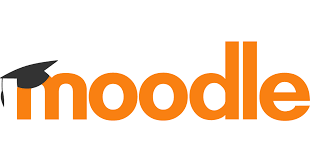
Kindly Settle all your outstanding balance. The College will be updating the financial details of all students in the system, meaning that those with balances will not be able to access the system after this exercise is done.
Available courses
- Teacher: Bwalya Kayengele
- Teacher: Rose Msimuko
- Teacher: Astol Hankombo
- Teacher: Fred kandandu
- Teacher: Brenda Musonda
- Teacher: Brenda Musonda
- Teacher: Willie Mzyece
- Teacher: Clive Chilobwa
- Teacher: Mudenda Christopher
- Teacher: James Fungaloko
- Teacher: Chibuye Ngosa
- Teacher: Mukachikwikwi Hamakoko
- Teacher: George Mhango
- Teacher: Chikuta Mishengo
- Teacher: Yvonne Simeo
- Teacher: Lastone Gondwe
- Teacher: Neleya Siyumbano
- Teacher: Gorrettie Mwango
- Teacher: Choolwe Simafuta
The value of soil science and management in agriculture cannot be over-emphasised. Soil management is important, both directly and indirectly, to crop productivity, environmental sustainability, and human health. Today’s engineers, crop scientists, animal scientists etc. may not only have to be masters in their professional or technical knowledge and skills but also, must have an in-depth understanding of related disciplines to be suitable for the job market. Soil science is the scientific study of the formation, classification, mapping and the physical, chemical and biological properties of the soil, including how these properties relate to the use and management of soils.
This applied soil science course will take students through the field of soil and water management, training students to understand the nature, importance and management of soil and water as they relate to crop production and environmental management. It is designed in a way that will build student knowledge and skills based on topics learned in the first-year course of “Fundamentals of Soil Science and Crop Production” which provided an overview of the fundamental concepts in crop and related soil science.
Welcome, therefore, to CS 231 – Applied Soil Science. I can assure you will enjoy studying this course. CS 231 – Applied Soil Science is a two-credit unit course meant to be taken in the first semester of Second Year.
- Teacher: Nchimunya Himunyanga
- Teacher: Nchimunya Himunyanga
- Teacher: Mutumpike Mabengwa
- Teacher: Isaac Sichivula
As posted on WhatsApp group, the Module is the study material comprising four units namely:
1. The crop environment
2. Principals of crop production and management principals
3. Machine use in crop production
4. Production of some selected crops-Field, Vegetable and Fruit crops
1. The crop environment
2. Principals of crop production and management principals
3. Machine use in crop production
4. Production of some selected crops-Field, Vegetable and Fruit crops
- Teacher: Jessy Malama
- Teacher: Namukolo Aongola
- Teacher: Floyd Mwenda
- Teacher: Ziezo Sikananu-Nchimunya
- Teacher: Namukolo Aongola
- Teacher: Floyd Mwenda
- Teacher: Namukolo Aongola
- Teacher: Rabson Banda
- Teacher: Floyd Mwenda
- Teacher: Willie Mzyece
- Teacher: Nchimunya Chimuka
- Teacher: Brenda Mbalamweshi
- Teacher: Majory Chama
- Teacher: Majory Chama
- Teacher: Brian Chimbanga
- Teacher: Janet M. Mwaba
- Teacher: Emeldah Pola
- Teacher: Brian Chimbanga
- Teacher: Helen Nkhata-Mukemu
- Teacher: Emeldah Pola
- Teacher: Chewe Mukuka
- Teacher: Emeldah Pola